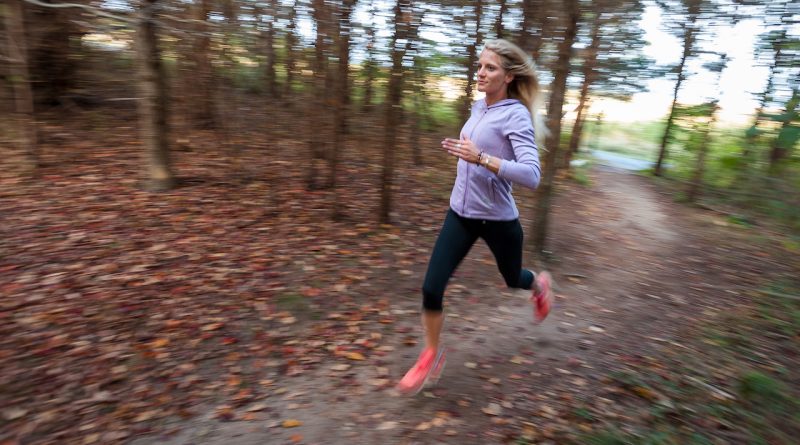How To Run Faster

Are you ready to run faster than ever this season? RunVermont coach Jess Cover shows how to step up the pace.
For Jess Cover, any weather is running weather. When she’s not working in her lakeside office at RunVermont, where she manages marketing and communications, she’s putting in the miles. In addition to her work for RunVermont, she’s also a certified U.S.A Track & Field Level II endurance coach. For the past ten years, she has been working with novice and experienced runners to help them achieve their goals of going faster or longer. Cover says breaking through a speed barrier doesn’t have to be all suffering and no payoff. With a little planning, diligence and patience, you could be just a few workouts away from smashing your previous PR. Here, Cover gives her advice on how to get a faster finish time by changing up your routine and increasing mileage and intensity.
GET CONSISTENT
Cover’s first tip for running faster is one of the most frequently shared in running circles: “Don’t take the winters off,” she says. “For successful runners, consistency is key if you want to improve and prevent injuries.” Even when the weather is cold and wet, keep running a minimum of two days a week. That base will serve you well as you look to ramp up your efforts. Create a run calendar that works for your schedule and put it on your wall or in your phone.
RESPECT THE 10-PERCENT RULE
When you’ve established a schedule for your runs and you’re ready to begin increasing your distance or intensity, follow a slow and steady upward trend. “If you’re running three times a week for 20 minutes, your next step is to add time or distance to one of those runs while keeping the other two short,” she says. To minimize the risk of injury, that increase should never be more than 10 percent of the previous distance and time.
SHAKE IT UP
“It’s not enough to run the same distance at the same pace,” Cover says. “You’ll need to do runs with different speeds and distances.” The length and pace of those runs will be relative to the race or distance you’re training for. For someone training for a 10K, a short run will be three miles and a long run will be eight, but for a marathoner, a short versus long run will be entirely different. You’ll also want to change the variety of terrain you’re running on; runners in Burlington will need to get away from the flat-as-pancake bike path while runners accustomed to steep hills will want to head to a local high school track for a workout.
HEAD FOR THE HILLS
Hills can hurt, but for runners looking to turn up the intensity, the neighborhood “heartbreak hill” can be a new favorite training tool. A sample workout involving a local hill looks like this: n 15 to 20 minutes of easy running on flat terrain for a warm-up. n 30 seconds hard running up the hill and jog back down. n 60 seconds hard running up before descending. n 90 seconds hard running up, before descending. Beginner runners can follow these four steps for the entire workout. Intermediate or advanced runners can follow a “ladder” and work their way back down the interval times, starting with 90 and ending with 30. Then try going back up for repeated sets. In addition to a great aerobic workout, hill workouts also force your body into a correct running form. “They get your body into the right position to use all the muscle groups,” she says.
DO THE BODY WORK
In addition to your running workouts, cross training in the gym will help improve fitness, prevent injuries and generally keep you from getting bored. Cover says some of the best strength exercises for runners emphasize core strength, balance and glute activation. These exercises don’t require any weights and should be done at home in at least two 20-minute sessions every week.
Some suggestions include:
Bridges: Lie on the floor on your back with your knees bent and your feet flat on the floor, about hip-width apart. Keep your feet in a comfortable position, not too close to your hips and not too far away. Keeping your torso flat, press your feet into the floor as your raise your hips. Hold this position before relaxing and bringing your hips slowly back down to the floor.
Planks: Get into a press position like you would for a pushup. Your body should form a straight line from shoulders to ankles. Bend your elbows and rest your weight on your forearms. Engage your core while you hold this position.
Lunge matrix: Do a combination of forward, backward, sideways and diagonal lunges.
SET A GOAL
Cover says it’s not enough to simply train and get faster. For the extra bit of encouragement, give yourself something to train for—be it a certain time in a 5K race or your first half marathon. Once you’ve paid your registration fee and marked your calendar you don’t have any other choice but to get out and run.


